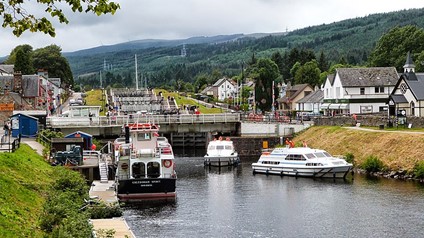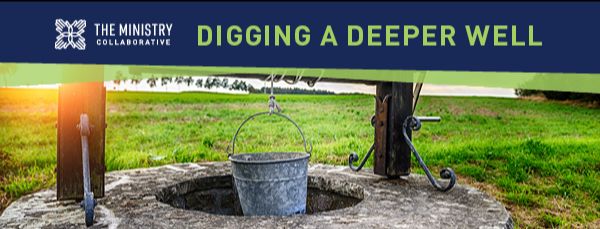Reeling from the impact of the Highland Clearances, early nineteenth-century Highland Scots were desperate to find a way to connect their region’s numerous Lochs (lakes) to provide seamless water transportation for commercial goods—both to stem the tide of emigration and to nurture a new economy. Engineer Thomas Telford proposed a series of canal locks that would connect the existing bodies of water, creating a 60-mile waterway from the northeast to the southwest of the Highlands. The plan included 29 locks, four aqueducts, and 10 bridges.
Conversation about some sort of waterway had started as early as 1620, but the idea was deemed unfeasible until 1793, when interest was renewed and planning began in earnest. Finally, in 1803, Parliament approved the waterway, allocated money, and authorized Telford to draw up detailed plans. The engineer consulted widely with other colleagues and, crucially, with shipowners (at the time this largely meant owners of sailing ships). The result was a plan that Telford estimated would take seven years to complete, and that provided, at every point, a suitable draught of at least 20 feet for ships.
In fact, the canal took 17 years to build. It finally opened to traffic in 1822—just as steamships, which were mostly too large to navigate the canal, were making their first appearance in Britain. 
The Caledonian Canal, an engineering marvel for its day, was suddenly a commercial disaster. Most ships built after the canal opened were too big to navigate it. And, shortly after that, with the advent of steam trains, the canal became almost obsolete, except as a tourist destination and a route for pleasure crafts.
History is filled with notable engineering achievements that endure across the changes of time. There are also a fair number of “Caledonian canals,” which couldn’t see the future coming.
Every church board is engaged in the work of planning. Sometimes it is a formal strategic plan that includes study and interviews. Other times it is as informal action plan, set in motion by a need (usually something not working) to put alternatives in place. For every plan your church board initiates, remembering one simple axiom might help you avoid your very own Caledonian Canal: What got us to today will not necessarily get us to tomorrow.
The well-intended temptations to ignore this axiom are legion.
Plans to replace a staff member often start with worry over “who will cover her area of responsibility” rather than the simple question, “Is this still the staff footprint we need (and can afford)?”
Building additions and renovations are almost always based on what the needs have been. Rarely can we anticipate what the needs will be in 5-10 years. No one could anticipate an extended period of months where the sanctuary was empty and everything was online. No one could foresee a return to gathering where continued online presence and upgraded ventilation in the church was urgently needed. Few projected that patterns of worship attendance might develop into the same number of people coming to worship, just less often. Same with education programs. Same with youth programs.
Church as an activity hub for those who more or less “know why we are here” is in the process of being replaced by a model of ministry that has faith communities responding to the need, expressed with increasing urgency, to help people find meaning and depth in their lives.
Planning has a way of turning into an exercise of reinforcing what we already know and do. If words like “continue,” “strengthen,” and “improve” dominate your planning report, you may want to pause and consider why. One of the hardest things to do is to plan for, give resources to, and be on the look-out for a constituency not yet present, in a landscape not yet imagined. However, starting with Jesus’ ministry in the gospels, through the Book of Acts, and through Paul’s journeys and writings, that is exactly what God calls followers to do.
We get a sense of this in places like the beginning of the 11th chapter of the Gospel of Matthew:
Now when Jesus had finished instructing his twelve disciples, he went on from there to teach and proclaim his message in their cities. 2 When John heard in prison what the Messiah was doing, he sent word by his disciples 3 and said to him, “Are you the one who is to come, or are we to wait for another?” 4 Jesus answered them, “Go and tell John what you hear and see: 5 the blind receive their sight, the lame walk, those with a skin disease are cleansed, the deaf hear, the dead are raised, and the poor have good news brought to them. 6 And blessed is anyone who takes no offense at me.”
Jesus was not the Messiah they expected. (How many times has your church board said to one another in the last three years, “this is not what we expected?”) When we start planning for what is next based largely on what we have already known, we are in less reliable territory than we may imagine.
Our plans can easily become Caledonian Canals. Rather than ask, “how can we create a plan that will continue and strengthen what we are doing?” a question particularly well suited for 2023 might be: “Where is God at work in our world and community and what would it take to join God there?”
When have you, in your own life, started an ambitious project that was no longer needed by the time you finished it? How about in the life of your congregation?
What plans, formal or informal, are on your church board agenda … or about to appear there?
How much are these plans based on what you as a congregation already know and do? Is that a good thing, in light of the changing landscape of congregational life?
How might you, together, craft a plan to be on the look-out for a constituency not yet present, in a landscape not yet imagined?








No Comments